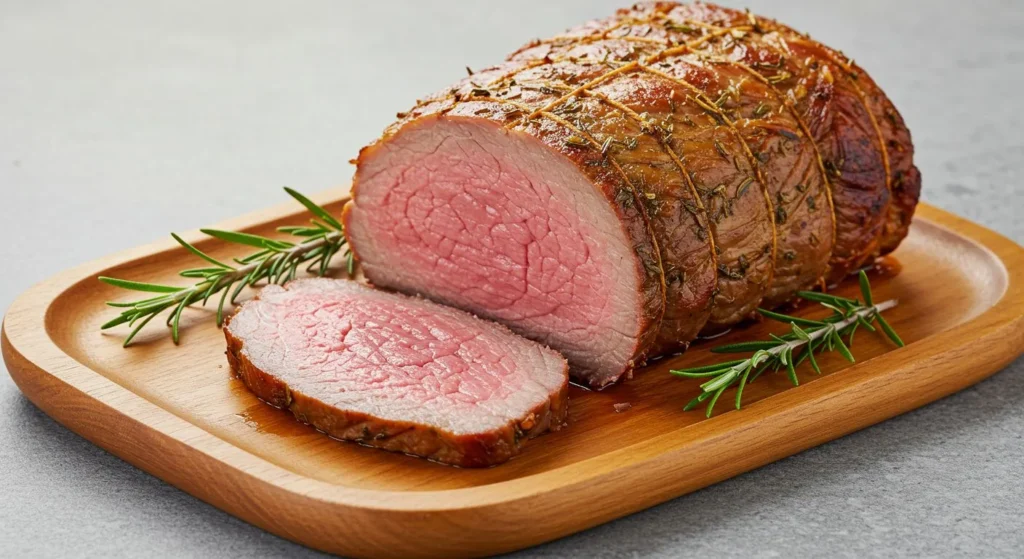
Nothing captures the essence of holiday dining quite like a perfectly executed Christmas roast beef centerpiece. This magnificent dish combines tradition with culinary excellence, bringing families together around a table of celebration. In this comprehensive guide, we’ll explore everything you need to know about creating a show-stopping roast beef that will become the highlight of your Christmas feast.
Christmas Roast Beef Recipe: Mastering the Holiday Classic
The perfect Christmas roast beef begins with understanding the fundamentals. From selecting the right cut to mastering the cooking technique, every step contributes to that moment when your guests take their first bite and experience pure culinary delight.
Selecting the Perfect Cut
For a truly memorable Christmas roast beef, choose one of these premium cuts:
- Prime Rib: The gold standard for Christmas roast beef, offering exceptional marbling and flavor
- Ribeye Roast: A boneless option with excellent fat distribution
- Tenderloin: Supremely tender, though less flavorful than fattier cuts
- Top Round: More economical while still delivering excellent results when prepared properly
- Sirloin Tip: Balanced flavor and tenderness at a mid-range price point
The Classic Christmas Roast Beef Recipe
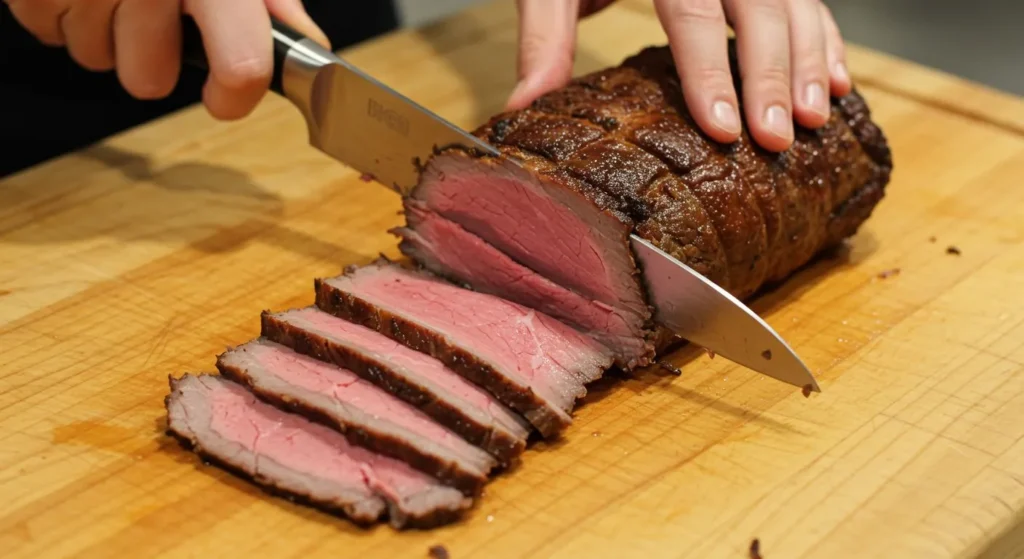
Ingredients:
- 5-7 pound beef roast (prime rib or ribeye recommended)
- 3 tablespoons extra virgin olive oil
- 2 tablespoons kosher salt
- 2 tablespoons freshly ground black pepper
- 6 garlic cloves, minced
- 2 tablespoons fresh rosemary, finely chopped
- 2 tablespoons fresh thyme leaves
- 1 tablespoon Dijon mustard
Preparation:
- Remove your beef from refrigeration 2-3 hours before cooking to reach room temperature
- Preheat your oven to 450°F (230°C)
- In a small bowl, combine olive oil, salt, pepper, garlic, herbs, and mustard
- Pat the roast dry with paper towels
- Rub the herb mixture generously over all surfaces of the meat
- Place the roast on a rack in a roasting pan, fat side up
- Insert an oven-safe meat thermometer into the thickest part
- Roast at 450°F for 15 minutes to develop a crust
- Reduce temperature to 325°F (165°C) and continue roasting until desired doneness:
- Rare: 120-125°F (49-52°C), approximately 15 minutes per pound
- Medium-Rare: 130-135°F (54-57°C), approximately 17 minutes per pound
- Medium: 140-145°F (60-63°C), approximately 20 minutes per pound
- Remove from oven and tent loosely with foil
- Allow to rest for 20-30 minutes before carving
Top 5 Marinades for the Perfect Christmas Roast Beef
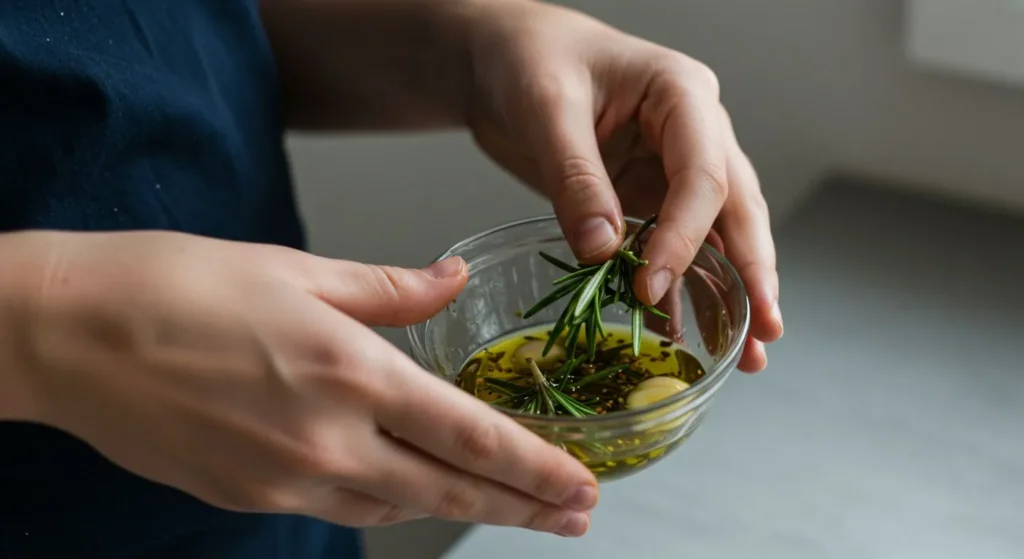
The right marinade can transform your Christmas roast beef from excellent to extraordinary. These five marinades offer distinctive flavor profiles to suit any holiday table.
1. Classic Herb & Garlic Marinade
Ingredients:
- ½ cup olive oil
- ¼ cup red wine vinegar
- 6 garlic cloves, minced
- 2 tablespoons fresh rosemary
- 2 tablespoons fresh thyme
- 1 tablespoon Dijon mustard
- 1 tablespoon black peppercorns, crushed
- 1 tablespoon kosher salt
Why it works: The combination of fresh herbs and garlic infuses the meat with aromatic flavors while the acid in the vinegar helps tenderize the beef.
2. Red Wine & Balsamic Marinade
Ingredients:
- 1 cup dry red wine
- ¼ cup balsamic vinegar
- ¼ cup olive oil
- 4 garlic cloves, crushed
- 1 tablespoon brown sugar
- 1 tablespoon fresh rosemary
- 1 teaspoon black pepper
- 1 teaspoon salt
Why it works: The red wine adds depth while balsamic vinegar brings a subtle sweetness that caramelizes beautifully during roasting.
3. Worcestershire & Soy Umami Boost
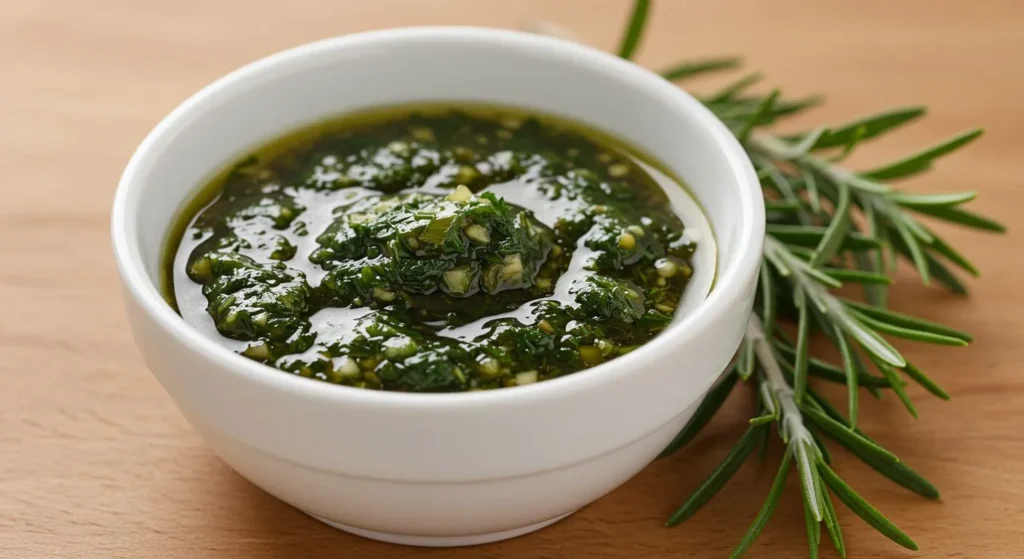
Ingredients:
- ⅓ cup Worcestershire sauce
- ⅓ cup soy sauce
- 3 tablespoons olive oil
- 2 tablespoons brown sugar
- 4 garlic cloves, minced
- 1 tablespoon fresh thyme
- 1 teaspoon black pepper
Why it works: This marinade maximizes umami flavors, creating a rich, savory profile that complements beef perfectly.
4. Coffee & Spice Rub Marinade
Ingredients:
- 3 tablespoons finely ground coffee
- 2 tablespoons brown sugar
- 1 tablespoon smoked paprika
- 1 tablespoon black pepper
- 2 teaspoons kosher salt
- 2 teaspoons garlic powder
- 2 teaspoons onion powder
- ¼ cup olive oil
Why it works: The coffee provides a unique earthy flavor and helps create an incredible crust while the sugar balances with slight sweetness.
5. Citrus & Herb Brightness
Ingredients:
- Zest and juice of 2 oranges
- Zest and juice of 1 lemon
- ¼ cup olive oil
- 4 garlic cloves, minced
- 2 tablespoons fresh thyme
- 1 tablespoon fresh rosemary
- 1 tablespoon honey
- 1 teaspoon salt
- 1 teaspoon black pepper
Why it works: The bright citrus notes cut through the richness of the beef, creating a balanced and refreshing flavor profile.
Mistakes to Avoid When Cooking Christmas Roast Beef
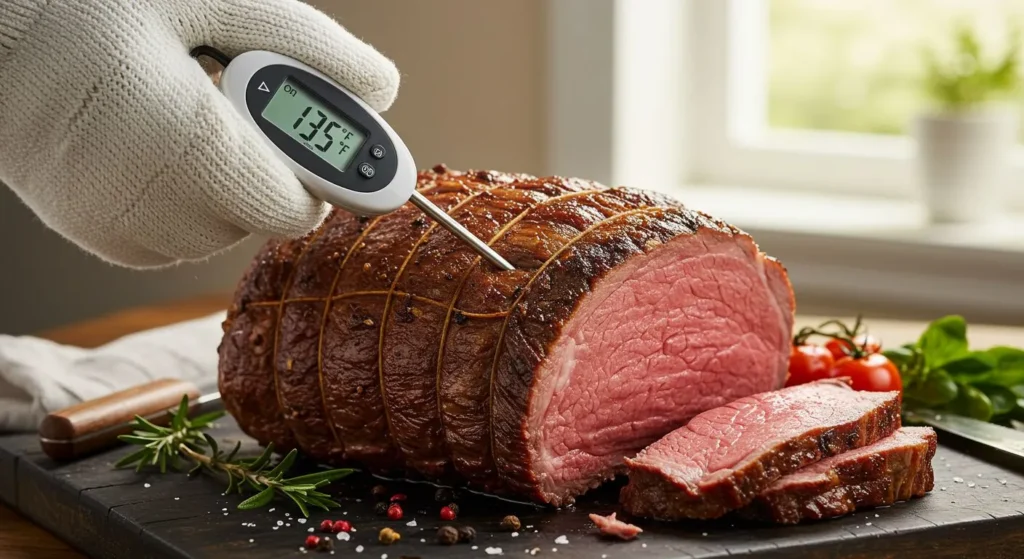
Even experienced home cooks can fall prey to common pitfalls when preparing a Christmas roast beef. Avoid these mistakes to ensure your holiday centerpiece achieves perfection.
1. Skipping the Room Temperature Rest
Cooking cold beef straight from the refrigerator results in uneven cooking—a well-done exterior with an undercooked center. Always allow your roast to sit at room temperature for 2-3 hours before cooking.
2. Underseasoning the Meat
Beef roasts are substantial pieces of meat that require generous seasoning. Don’t be timid with salt and pepper—a proper crust requires thorough seasoning that penetrates beyond the surface.
3. Overcooking Your Precious Roast
Nothing ruins a premium cut faster than overcooking. Invest in a reliable meat thermometer and remove the roast when it’s 5-10 degrees below your target temperature, as it will continue cooking during the resting period.
4. Neglecting the Resting Period
Perhaps the most critical step is allowing your roast to rest after cooking. Cutting too soon causes the juices to run out, resulting in dry meat. A 20-30 minute rest under foil allows the juices to redistribute throughout the roast.
5. Improper Carving Technique
Always carve against the grain for maximum tenderness. Use a sharp carving knife and cut thin slices for the best texture and presentation.
Chef’s Secrets for a Tender and Juicy Christmas Roast Beef
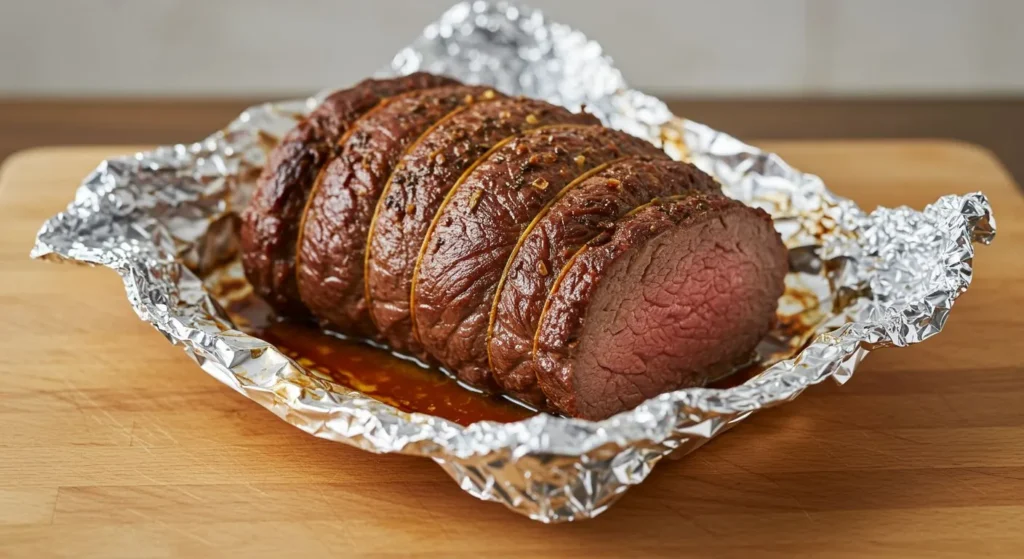
Professional chefs employ several techniques to elevate their roast beef from good to extraordinary. Here are their insider secrets:
Dry Brining for Enhanced Flavor
Apply salt to your roast 24-48 hours before cooking and refrigerate uncovered. This dry brining process draws out moisture initially, which is then reabsorbed, creating naturally seasoned meat with improved texture.
The Reverse Sear Method
Consider cooking your roast low and slow (at 225°F/107°C) until it reaches 10-15 degrees below your target temperature, then finishing with a high-heat sear (500°F/260°C) for 5-10 minutes. This method provides more even cooking and better crust development.
Compound Butter Finish
Create a compound butter using softened butter, herbs, garlic, and seasonings. Apply this to your roast during the last few minutes of cooking or immediately after removing it from the oven to add richness and flavor.
Strategic Placement of Fat
Position your roast with the fat cap facing upward so it bastes the meat naturally during cooking, enhancing both moisture and flavor.
Perfect Internal Temperatures
For holiday gatherings with varied preferences, aim for medium-rare to medium in the center (130-140°F/54-60°C). The outer portions will be more done, satisfying guests who prefer well-done beef.
Best Side Dishes to Serve with Christmas Roast Beef
A magnificent Christmas roast beef deserves accompaniments that complement its rich flavors without overshadowing the star attraction.
Classic Potato Accompaniments
- Yorkshire Puddings: The traditional British accompaniment, perfect for soaking up flavorful juices
- Crispy Roast Potatoes: Parboiled, roughed up, and roasted until golden in beef drippings
- Creamy Mashed Potatoes: Enhanced with butter, cream, and perhaps a touch of horseradish
- Duchess Potatoes: Elegant piped potato rosettes with a crisp exterior
- Potato Gratin: Thinly sliced potatoes layered with cream, garlic, and cheese
Vegetable Side Dishes
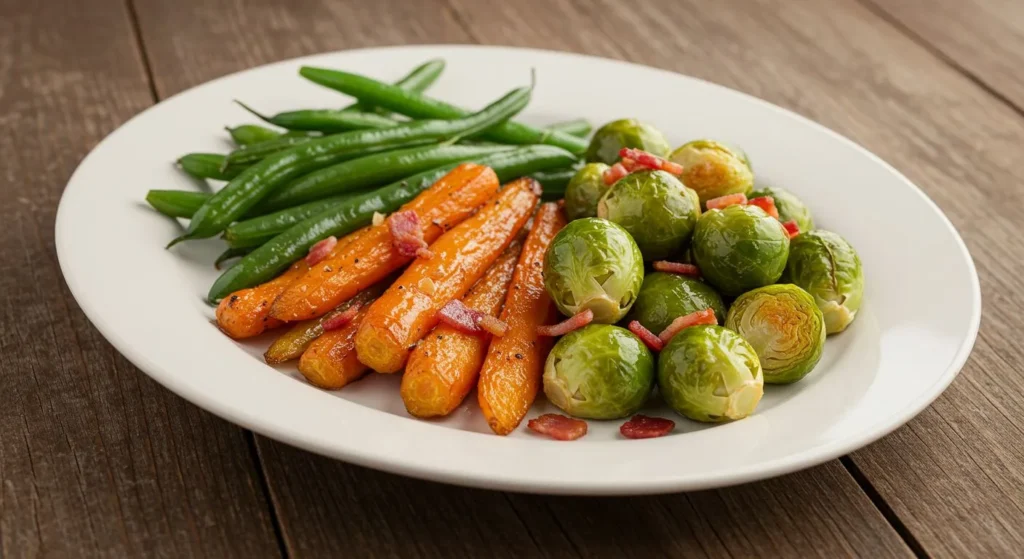
- Green Beans Almondine: Crisp-tender beans with toasted almonds and brown butter
- Honey-Glazed Carrots: Sweet, colorful, and visually appealing
- Brussels Sprouts with Bacon: Caramelized sprouts with crispy bacon bits
- Creamed Spinach: Rich and indulgent, perfectly balancing the beef
- Roasted Root Vegetables: Colorful medley of carrots, parsnips, and turnips
Sauces and Condiments
- Red Wine Jus: Made from the roasting pan drippings, reduced with good red wine
- Classic Horseradish Cream: The traditional sharp accompaniment that cuts through richness
- Béarnaise Sauce: Elegant tarragon-infused buttery sauce
- Mushroom Sauce: Earthy flavors that complement beef perfectly
- English Mustard: Sharp heat that enhances the beef’s natural flavors
Slow Cooker vs. Oven: Which Method is Best for Christmas Roast Beef?
Both cooking methods have distinct advantages, and understanding their differences helps you choose the right approach for your holiday meal.
Oven Roasting: The Traditional Approach
Advantages:
- Superior crust development and caramelization
- Better control over doneness
- Authentic roasted flavor profile
- Traditional presentation with better browning
- Ability to create pan drippings for gravy
Best for:
- Premium cuts like prime rib and ribeye
- When presentation is paramount
- When you have time to monitor the cooking process
- Creating that classic holiday aroma throughout your home
Slow Cooker Method: Convenience and Tenderness
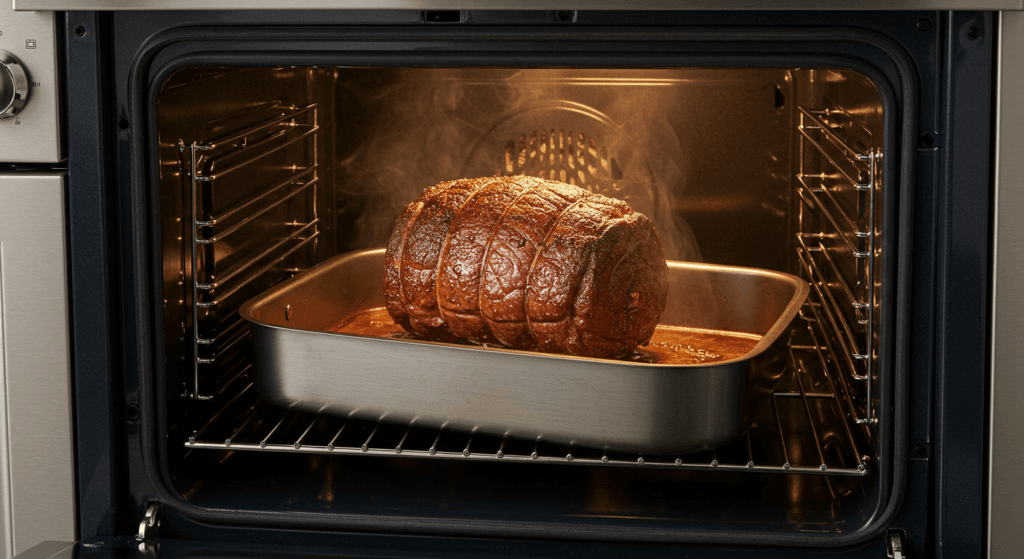
Advantages:
- “Set and forget” convenience
- Excellent for tougher, less expensive cuts
- Frees up oven space for other dishes
- Very difficult to overcook
- Consistently moist results
Best for:
- Tougher cuts like chuck roast or bottom round
- المضيفون المشغولون الذين يحتاجون إلى إعداد أطباق أخرى
- Smaller gatherings with less emphasis on presentation
- Creating tender, pull-apart texture
The Verdict
For a traditional Christmas roast beef, especially with premium cuts, oven roasting remains the gold standard. However, the slow cooker offers an excellent alternative for more casual gatherings or when oven space is limited.
Conclusion: Perfecting Your Christmas Roast Beef Legacy
The Christmas roast beef stands as more than a meal—it represents tradition, celebration, and the art of bringing people together through exceptional food. The difference between an ordinary roast and an extraordinary one lies in the details: selecting premium ingredients, understanding cooking science, applying professional techniques, and serving with complementary sides.
Whether you’re a first-time host or a seasoned culinary veteran, the journey to roast beef perfection is both rewarding and achievable. With the guidance provided in this comprehensive article, you now possess the knowledge to create a Christmas roast beef that will not only impress your guests but potentially establish a new holiday tradition for years to come.
Remember that cooking is both science and art—follow the guidelines while adding your personal touch. As you master the techniques shared by professional chefs and avoid common pitfalls, you’ll develop the confidence to experiment and refine your approach each holiday season.
The ultimate measure of success isn’t just in the perfectly pink center or the flavorful crust, but in the memories created around your table. When conversation flows, plates are emptied, and guests linger for just one more slice—that’s when you know your Christmas roast beef has truly achieved greatness.
 DINNER
DINNER  LUNCH
LUNCH 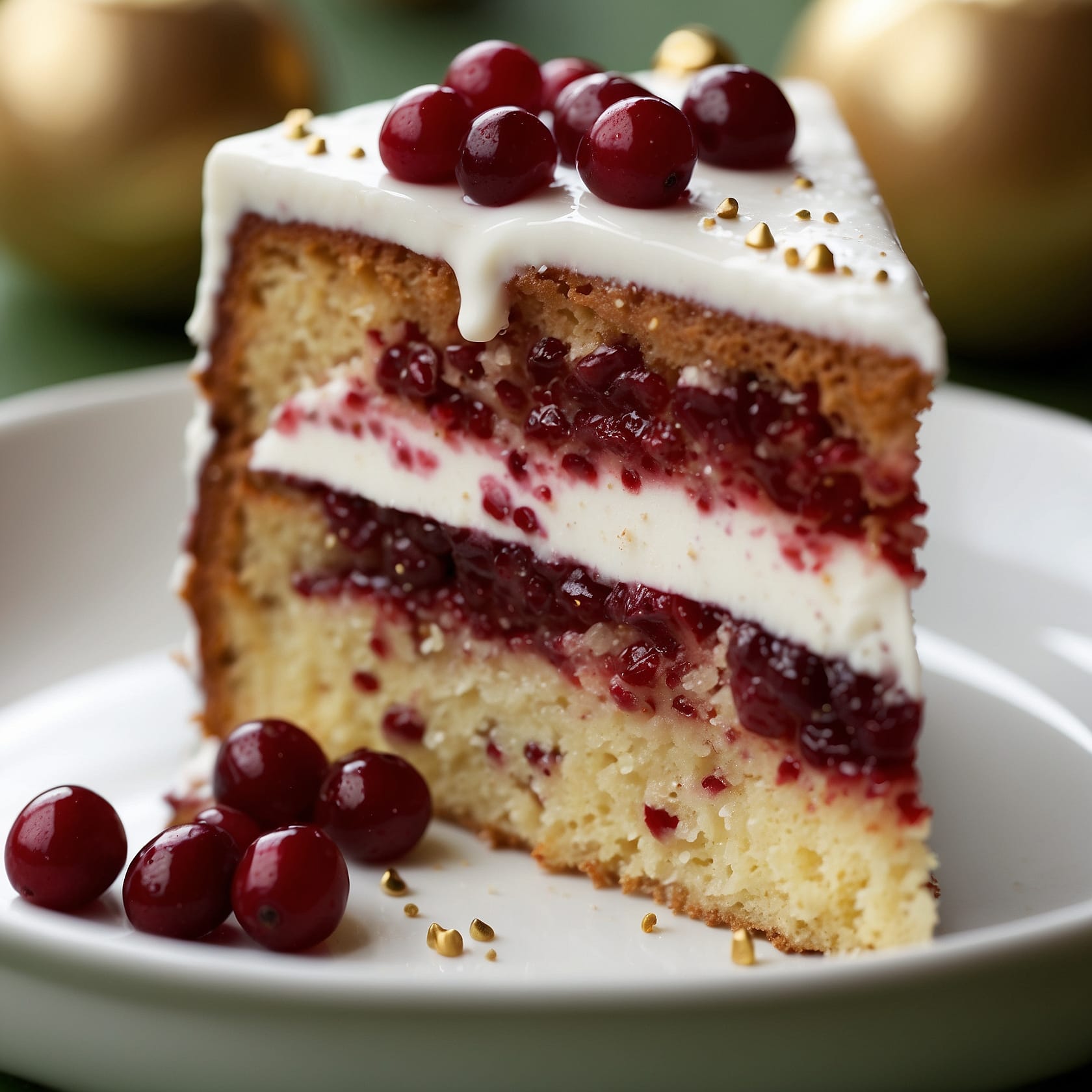 CAKE
CAKE  BREAKFAST
BREAKFAST For more amazing recipes, be sure to check out our other sections to explore a variety of ideas that will enrich your cooking experience. Each section offers its own unique flavors to ensure a delightful culinary journey:
- Easy and Quick Recipes: A collection of dishes that guarantee delicious meals with minimal effort and time.
- Healthy Recipes: Discover healthy and delicious options that fit your lifestyle.
- Desserts: A diverse selection of sweets that will add a special touch of sweetness to your table.
- Lunch Recipes: Tasty lunch ideas that you can easily prepare to delight your family.
- Dinner Recipes: Delicious and easy-to-make recipes that will make your dinner a memorable occasion.
Frequently Asked Questions About Christmas Roast Beef
How much roast beef should I buy per person?
For a bone-in roast like prime rib, calculate approximately ¾ to 1 pound per person. For a boneless roast, ½ to ¾ pound per person is typically sufficient. If you want leftovers (highly recommended for sandwiches!), add an extra 2-3 pounds to your total.
Can I prepare my Christmas roast beef the day before?
While cooking should happen on the day of serving, you can prepare your roast by seasoning or applying a dry rub 24-48 hours in advance. Store it uncovered in the refrigerator to develop flavor and create a drier surface for better browning.
What’s the best way to reheat leftover roast beef without drying it out?
Slice your leftover roast beef thinly and place the slices in a baking dish with a few tablespoons of beef broth or leftover jus. Cover tightly with foil and heat in a 300°F (150°C) oven until just warmed through (about 20-25 minutes). Alternatively, for smaller portions, place slices in a steamer basket over simmering water for 3-5 minutes.
How can I tell if my roast beef is done without a meat thermometer?
While a meat thermometer is strongly recommended for precision, you can use the touch test in a pinch. Press the center of the roast:
- Rare: Feels soft and spongy (like the base of your thumb when making an OK sign)
- Medium-Rare: Slightly firmer with some resistance (like pressing the base of your thumb when touching thumb to index finger)
- Medium: Firm but still yields to pressure (like pressing the base of your thumb when touching thumb to middle finger)
- Well-Done: Firm with little give (like pressing the base of your thumb when touching thumb to pinky)
What can I do with the pan drippings from my roast beef?
The pan drippings are culinary gold! Use them to make a classic jus by adding beef stock and red wine to the roasting pan, scraping up all the browned bits, and reducing until slightly thickened. Alternatively, use them as the base for an exceptional gravy by adding a roux of butter and flour.
How long can I safely marinate my Christmas roast beef?
For oil and herb-based marinades without acidic ingredients, you can marinate up to 24 hours. For marinades containing acids like wine, vinegar, or citrus juice, limit marination to 4-6 hours for larger cuts to prevent the exterior from becoming mushy.
Is it necessary to sear my roast beef before putting it in the oven?
While not absolutely necessary, searing creates a flavorful crust through the Maillard reaction. You can either sear in a hot pan before roasting or use the high-temperature method at the beginning of roasting (450°F for 15 minutes) to achieve similar results.
What’s the best way to carve a Christmas roast beef?
Allow the meat to rest fully, then place it on a stable cutting board with a channel to catch juices. If using a bone-in roast, either remove the bones first or cut between them. For boneless roasts, identify the direction of the grain and slice perpendicular to it. Keep slices thin (¼-½ inch) for the most tender result. Use a long, sharp knife and cut with a smooth sawing motion rather than pressing down.
Can I cook my Christmas roast beef from frozen?
While possible, it’s not recommended. Cooking from frozen results in uneven cooking—potentially overdone on the outside before the center reaches safe temperatures. Always thaw your roast completely in the refrigerator (allowing approximately 24 hours for every 4-5 pounds) before cooking.
What wine pairs best with Christmas roast beef?
For a classic pairing, select a full-bodied red wine with good structure and moderate tannins. Excellent choices include Cabernet Sauvignon, Bordeaux blends, Syrah/Shiraz, or Malbec. If your roast features herbs like rosemary and thyme, consider a Merlot or Sangiovese. For more adventurous pairings, a mature Pinot Noir or even a full-bodied white Burgundy can complement a perfectly cooked medium-rare beef.
